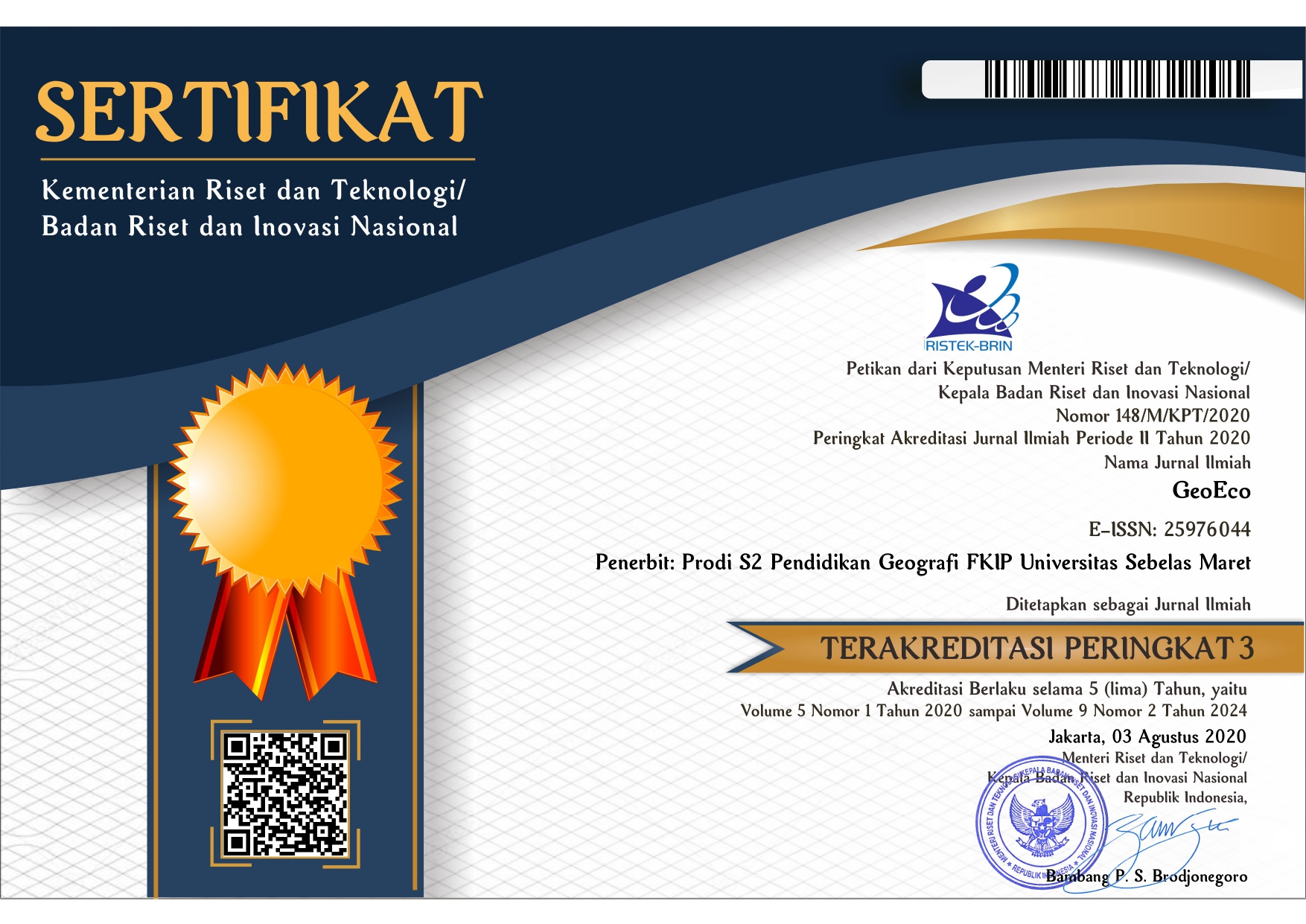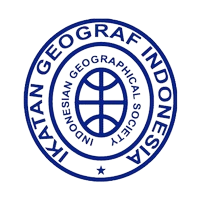EKSISTENSI SASI DALAM PENGELOLAAN LINGKUNGAN HIDUP DAN PERAN SERTA MASYARAKAT DI NEGERI HARUKU KABUPATEN MALUKU TENGAH PROPINSI MALUKU TAHUN 2013
Abstract
The research aimed to find out: a) the existence of sasi in Haruku country, b) the public participation in sasi management in Haruku country, c) the role of sasi in the environment management in Haruku country in 2013. The research method employed in this research was a descriptive qualitative research. The sample of research was taken using purposive sampling technique with king, kewang, the head of soa and community, as the source. Techniques of collecting data used were in-depth interview and observation. Technique of analyzing data was conducted using an interactive analysis method encompassing data reduction, data display, and conclusion drawing or verification in the qualitative descriptive form.
The conclusions obtained from this research were as follows. 1) sasi was still implemented actively and consistently by the Haruku country people, whether forest sasi or land sasi, marine sasi, tributary or river sasi and domestic sasi. 2) sasi played an important role in the living environment management in Haruku country, either natural or social environment, the management of which was conducted based on the mutual responsibility, sustainabilty and benefit principles aiming to realize the sustainable development so that the environment balance could be maintained
and the environment as well as the natural resource countained within it could be felt by the next generation, the natural environment condition would be well-maintained and the good relationship created among the people in Haruku country would be the sasi’ succesfulness in the living
environment management. 3) the public participation was divided into three stages: a) sasi planning that had been existing since 1600, was then implemented from generation to generation by the Haruku people up to now, and the leadership type in sasi rule planning was the oligarchy one;
b) in sasi implementation, the public participation was dependent on the social status existing within the community and the voluntariness degree of public participation was categorized into free participation; c) the utilization and profit sharing system was that the harvest product was withdrawn by the owner for land sasi, that it was given in two timer higher amount to the church,king, kewang, orphans, and widows, for marine sasi. Meanwhile, the utilization system for fish lompa sasi was that it was distributed evenly to all members of society.
Keywords: Existence, Public Participation, Environment Management, Sasi
Full Text:
PDFRefbacks
- There are currently no refbacks.












.png)

